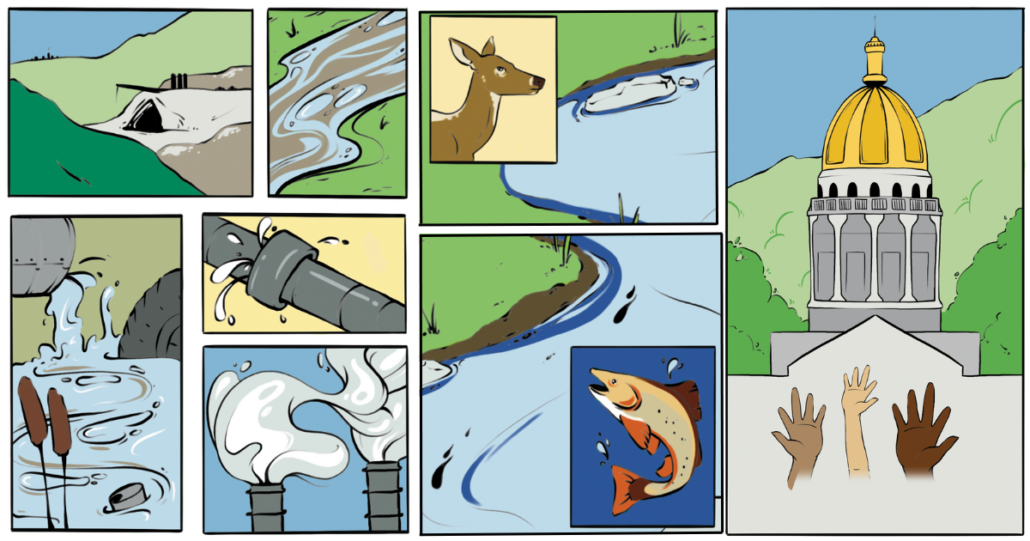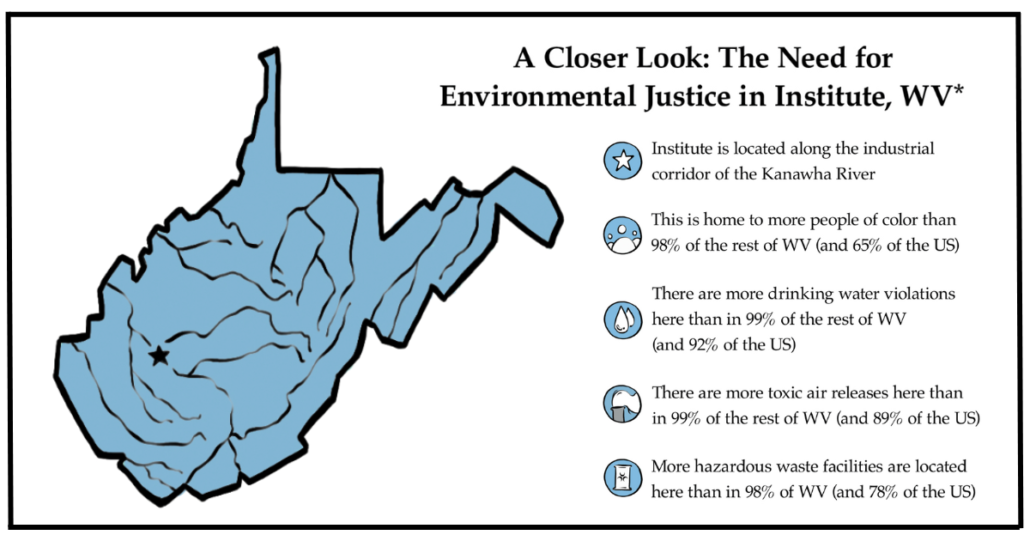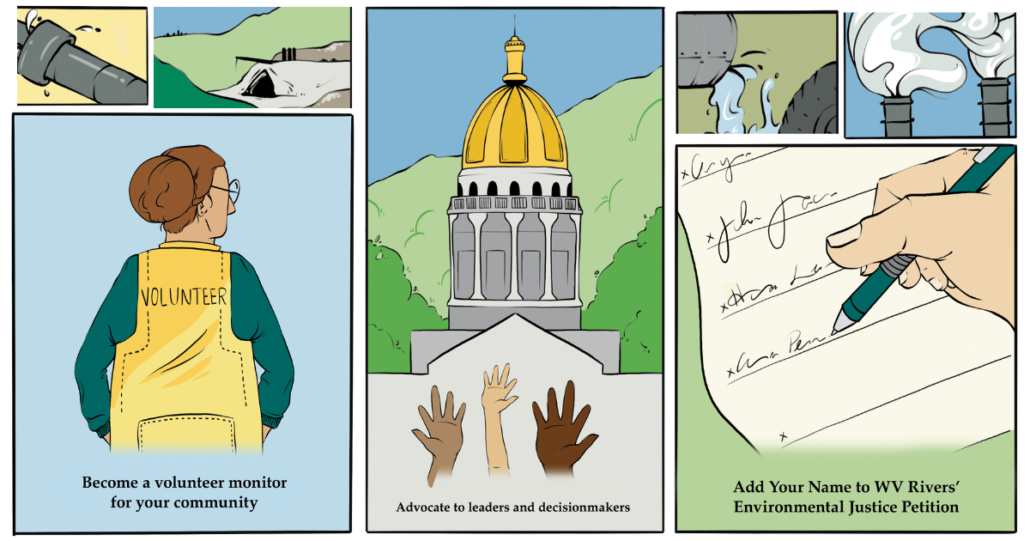Environmental Justice
Catch It, Hunt It, Forage It, Drink It — Clean Water and Land for Every West Virginian.
The term environmental justice can sometimes feel divisive, but at its core, it’s about something we can all agree on: the right to clean water, fresh air, and healthy land. When pollution puts our ability to eat the fish we catch, hunt the deer we rely on, or drink water straight from the tap at risk — that’s not just an environmental issue, it’s an injustice. Every West Virginian deserves safe places to live, work, and play — because protecting our health and way of life is something we all have in common.
West Virginia Rivers Coalition’s Approach to Environmental Justice:
WV Rivers works to keep our rivers and streams clean and healthy for all. We believe that clean water is the foundation of life, and everyone should have access to fresh water, healthy air, and the great outdoors.
WV Rivers acknowledges that our work around environmental justice (EJ) issues is fluid and ever-evolving, like the rivers and streams we work to protect, and we know there is always more to learn. While WV has no federally recognized tribes, this land was the ancestral territory of many indigenous communities who have taught us that we should be good stewards of the earth and that water is sacred.
As a statewide advocacy coalition, we welcome all identities into our work and aim to weave the guiding principles of EJ into everything we do.
In our work, we:
- Show respect for the history, culture, traditions, capacities, and identities represented in the places we work.
- Stand with communities who have been overburdened by pollution and are facing consequences of cumulative impacts.
- Work in partnerships with communities to develop solutions to environmental injustices.
- Follow the lead of communities, joining them in the work to protect and restore their environment and health.
So, What is Environmental Justice?
Environmental justice means everyone is treated fairly and has a say in decisions about our health and environment. no matter their race, color, nationality, Tribal affiliation, income, education level, or disability.
This practice ensures no group faces more environmental health problems than others, providing everyone with a healthy, sustainable, and safe environment.
What Does Environmental Injustice Look Like in West Virginia?
Some communities in WV are disproportionately chosen as sites for waste storage, industrial facilities, and natural resource extraction. Historically, these types of projects have caused harm to our water, land, and air. This makes it harder for people living nearby to stay healthy.
Whether it’s an elementary school placed dangerously close to a toxic sludge pond at a coal mining operation or a fracked gas pipeline snaking down our steep slopes, or churches and homes downstream and -wind of chemical discharges, it’s a reality many West Virginians know all too well as they deal with the fall out: degrading home values, poor and failing health, and children and grandchildren leaving the Mountain State in hopes of a livable future.
Let’s be clear: Every West Virginian deserves clean air, safe water, and a healthy place to call home. But too often, communities across our state—especially those historically excluded from decision-making—face greater environmental and health risks.
What’s a Cumulative Impact?
Cumulative impacts are the total effects of harmful things, like chemicals, on a community’s health and well-being over time.
In West Virginia, low-income households and communities of color often face the worst impacts, dealing with pollution from chemical plants, landfills, and coal mines.
Let’s take a closer look at Institute, West Virginia, and indicators of Environmental Injustice in this WV community, which shows us why environmental justice is needed in Institute and throughout the hills and hollers of our state.
- Institute is located along the industrial corridor of the Kanawha River near Charleston, WV.
- This is home to more people of color than 98% of the rest of WV (and 65% of the US)
- More hazardous waste facilities are located here than in 98% of WV (and 78% of the US)
- There are more drinking water violations here than in 99% of the rest of WV (and 92% of the US)
- There are more toxic air releases here than in 99% of the rest of WV (and 89% of the US)
Families and people who live near hazardous waste and industrial facilities deal with unsafe drinking water and breathe polluted air, all while struggling to get the attention of decision-makers and the resources they need.
At the same time, the state agencies meant to protect our communities are underfunded and understaffed, leaving residents without the support they deserve. Public agencies must be available and responsive to all communities—not just those with political influence.
Ways to Act for Environmental Justice
- Download a copy of our EJ Zine to print and share. (Black & White version coming soon. Once printed, fold in half, then in thirds.)
- Become a Volunteer Monitor for Your Community
- Advocate to Decisionmakers
- Add Your Name to WV Rivers’ Environmental Justice Petition
- Take this Survey to Help Us Learn More About You
All illustrations for this project were created by WV artist Séamus Rionann.







